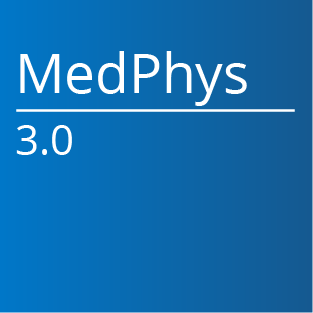
|
Report No. 192 - AAPM and GEC-ESTRO guidelines for image-guided robotic brachytherapy (2014) Category: Reports In the last decade, there have been significant developments into integration of robots and automation tools with brachytherapy delivery systems. These systems aim to improve the current paradigm by executing higher precision and accuracy in seed placement, improving calculation of optimal seed locations, minimizing surgical trauma, and reducing radiation exposure to medical staff. Most of the applications of this technology have been in the implantation of seeds in patients with early-stage prostate cancer. Nevertheless, the techniques apply to any clinical site where interstitial brachytherapy is appropriate. In consideration of the rapid developments in this area, the American Association of Physicists in Medicine (AAPM) commissioned Task Group 192 to review the state-of-the-art in the field of robotic interstitial brachytherapy. This is a joint Task Group with the Groupe Européen de Curiethérapie-European Society for Radiotherapy & Oncology (GEC-ESTRO). All developed and reported robotic brachytherapy systems were reviewed. Commissioning and quality assurance procedures for the safe and consistent use of these systems are also provided. Manual seed placement techniques with a rigid template have an estimated in vivo accuracy of 3–6 mm. In addition to the placement accuracy, factors such as tissue deformation, needle deviation, and edema may result in a delivered dose distribution that differs from the preimplant or intraoperative plan. However, real-time needle tracking and seed identification for dynamic updating of dosimetry may improve the quality of seed implantation. The AAPM and GEC-ESTRO recommend that robotic systems should demonstrate a spatial accuracy of seed placement =1.0 mm in a phantom. This recommendation is based on the current performance of existing robotic brachytherapy systems and propagation of uncertainties. During clinical commissioning, tests should be conducted to ensure that this level of accuracy is achieved. These tests should mimic the real operating procedure as closely as possible. Additional recommendations on robotic brachytherapy systems include display of the operational state; capability of manual override; documented policies for independent check and data verification; intuitive interface displaying the implantation plan and visualization of needle positions and seed locations relative to the target anatomy; needle insertion in a sequential order; robot–clinician and robot–patient interactions robustness, reliability, and safety while delivering the correct dose at the correct site for the correct patient; avoidance of excessive force on radioactive sources; delivery confirmation of the required number or position of seeds; incorporation of a collision avoidance system; system cleaning, decontamination, and sterilization procedures. These recommendations are applicable to end users and manufacturers of robotic brachytherapy systems. Medical Physics, 41, 101501 (2014) https://doi.org/10.1118/1.4895013 ISBN: 978-1-936366-30-9 Altmetrics for this report Keywords: Robot, Brachytherapy, Interstitial, Remote Afterloader, Seed Implant Working Group on Robotic Brachytherapy Task Group #192 Tarun K. Podder, Luc Beaulieu, Barrett Caldwell, Robert A. Cormack, Jostin B. Crass, Adam P. Dicker, Aaron Fenster, Gabor Fichtinger, Michael A. Meltsner, Marinus A. Moerland, Ravinder Nath, Mark J. Rivard, Tim Salcudean, Danny Y. Song, Bruce R. Thomadsen, Yan Yu Committee Responsible: Brachytherapy Subcommittee Last Review Date: , Therapy Imaging Subcommittee Last Review Date: |
DISCLAIMER



















